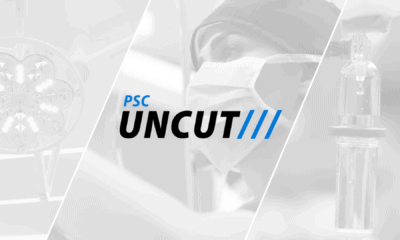Fat transfer is undoubtedly one of the most popular and important advancements in the last 5 years. The concept realizes the wishful comments made in the past, “I wish I could just take fat from here and put it there.” This is now reality for plastic surgery patients.
Whether it’s transferring fat to the face, breasts, or rearranging volumes in the thighs, abdomen, and waist, fat transfer has proved itself both valuable and very effective. “I think one of the paramount things that’s changed in plastic surgery…is the use of fat,” shares board certified plastic surgeon Dr. Shaun Parson of Arizona. “Years ago, people weren’t putting it in faces after facelifts, years ago people weren’t adding it like they’re adding it now. I see it as a real tool.”
Fat Transfer Realities and Expectations
The procedures involved in fat transfer are fairly routine: taking fat from one area via liposuction and placing it somewhere else. The analogy to a sculptor is apt: plastic surgeons are able to take volume from one area where there is too much and use it to sculpt another region where there is too little, offering improvement to both areas at the same time. When before during a liposuction procedure the removed fat was discarded, now surgeons can discuss pre-op with patients if there’s any interest in utilizing that fat for another region on the body. “Typically if you’re doing body sculpting, a patient comes in for liposuction,” says Parson. “We’re at a point now where you don’t have to say, ‘Hey, let’s just throw that away.'”
While in theory it is simple, the reality is not all of the fat will “take” – a percentage of injected fat will not remain where it is placed after recovery. “I’ve transferred this to the buttock area, to the breast, to the face,” explains board certified plastic surgeon Dr. Robert Whitfield. “The face always heals, almost all of it. The breast, variable – 60% is a good number. 50-80% – there’s a range, it depends on the person you transfer it from.”
The great success of fat grafting also comes with great patient expectations. Patients may overestimate how much enhancement can be done by the transfer of fat from one area to the other, an expectation that needs be checked by the surgeon. “You have to manage expectations in terms of what it can do and what it can’t do, but sometimes it’s about taking it away as much as where you add it,” says Parson.
Great Results Follow Great Consultations
Regardless of the procedure, the patient consultation prior to surgery is of premier importance when it comes to achieving great results. While in theory a surgeon can take fat from one place and transfer it to another, unique aspects of the patient need to be taken into consideration to maximize their desired results.
“I’ve done about a 100 fat grafting cases to the breast per year over the past 5 years. I’ve refined our harvesting of the fat, the processing of the fat, the reinjection of the fat,” explains Whitfield. “The only variable that changes in that is the patient. You can always narrow a waist with liposuction, but when you transfer the fat back to the patient and the breast site in particular, is this someone who’s postpartum? Have they had weight loss? Gain? Implants removed? Replaced? Are they thin? What’s the issue with the patient?”
Is There a Best Place to Take it From?
The seemingly obvious answer is, “Anywhere there is too much fat!” For many patients, this will be areas where fat tends to accumulate most – the abdomen and thighs. That being said, many patients may not want fat removed from certain areas, or may not have enough in the typical sources. “For thinner patients who’re desiring natural augmentation, they won’t have an abdomen or a flank area, so the thigh is becoming the predominant area [in these cases],” explains Whitfield.
Where the fat comes from is not standard and will entirely depend on the situation. Is the patient overweight or thin? Is the fat transfer a part of a fat removal and body contouring procedure? Is it for enhancing a breast augmentation or facelift? All of these questions will be asked and answers pinned down during a consultation.
It’s important, always, for patients to seek out not only a board certified plastic surgeon for such procedures, but one who has significant experience in transferring fat. If those boxes are checked, the magic of fat transfer can be harnessed for truly remarkable results.








Facebook
Twitter
Instagram
YouTube
RSS